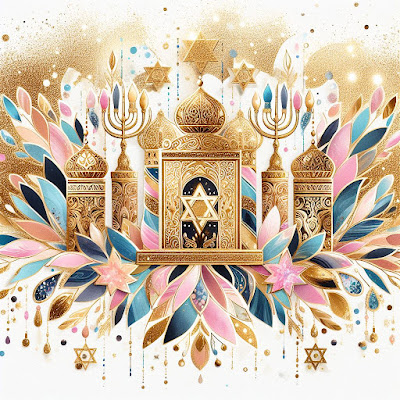Sacred Symbols | The Kohathites And The Tabernacle's Furnishings
Introduction:
In the heart of ancient Israel's worship stood the Tabernacle, a sacred space where the divine met with humanity. Among the custodians of this sacred space were the Kohathites, a tribe within the Levites, entrusted with the responsibility of caring for and transporting the holy furnishings of the Tabernacle. Each furnishing was more than a physical object; it held profound symbolism, representing facets of the Israelites' relationship with God. In this exploration, we delve into the significance of these sacred symbols through the lens of the Kohathites.
The Ark of the Covenant: God's Throne of Mercy
At the center of the Holy of Holies within the Tabernacle rested the Ark of the Covenant. For the Kohathites, transporting the Ark was no ordinary task—it symbolized God's throne of mercy, the place where His presence dwelled among His people. The mercy seat, with its cherubim overlooking, represented the intimate connection between the divine and the Israelites. The Kohathites' meticulous care of the Ark reflected their recognition of the holiness and centrality of God's mercy in their journey.
The Table of Showbread: Sustenance from the Divine
As the Kohathites attended to the Table of Showbread, they handled a symbol of sustenance provided by God. The twelve loaves of bread, representing the twelve tribes of Israel, were a reminder of the divine provision in the wilderness. The Kohathites, in their role, were not merely caretakers of physical bread but carriers of a profound symbol of God's sustaining presence and nourishment for His people.
The Lampstand: Illuminating the Divine Presence
The golden Lampstand, with its seven branches and lamps, illuminated the Holy Place within the Tabernacle. The Kohathites' task of transporting and maintaining the Lampstand mirrored the responsibility of bringing divine light into the sacred space. This symbolized God's guidance and the illumination of His presence, a role the Kohathites took on with reverence, recognizing the significance of being bearers of spiritual light.
The Altar of Incense: Rising Prayers and Communion
The fragrant incense rising from the Altar of Incense symbolized the prayers of the Israelites ascending to God. As the Kohathites attended to this sacred furnishing, they played a role in facilitating the spiritual communion between God and His people. The incense, a symbol of the people's worship and intercession, underscored the Kohathites' involvement in the sacred dialogue between the earthly and the divine.
Lessons for Contemporary Believers:
The sacred symbols tended to by the Kohathites offer profound lessons for contemporary believers:
1. Recognizing the Holiness of God's Presence:
As the Kohathites approached the sacred furnishings with reverence, modern believers are reminded to recognize the holiness of God's presence in their lives, approaching worship and service with awe and respect.
2. Acknowledging Divine Provision:
The Table of Showbread serves as a reminder of God's continual provision. Believers today are encouraged to acknowledge and trust in God's sustaining presence in their lives.
3. Being Bearers of Spiritual Light:
The Lampstand symbolizes the role of believers in illuminating the world with the light of God's truth. Just as the Kohathites carried the Lampstand, contemporary believers are called to be bearers of spiritual light in their communities.
4. Participating in the Sacred Dialogue:
The Altar of Incense signifies the communal prayers and worship of God's people. Believers are invited to actively participate in the sacred dialogue between humanity and the divine through prayer and worship.
Conclusion:
The Kohathites, as caretakers of the Tabernacle's furnishings, carried the weight of sacred symbols that encapsulated the essence of the Israelites' relationship with God. In reflecting on their role, contemporary believers are invited to appreciate the profound symbolism embedded in their own faith practices, recognizing the holiness, provision, illumination, and spiritual communion that come from their interactions with divine symbols in worship and service.






